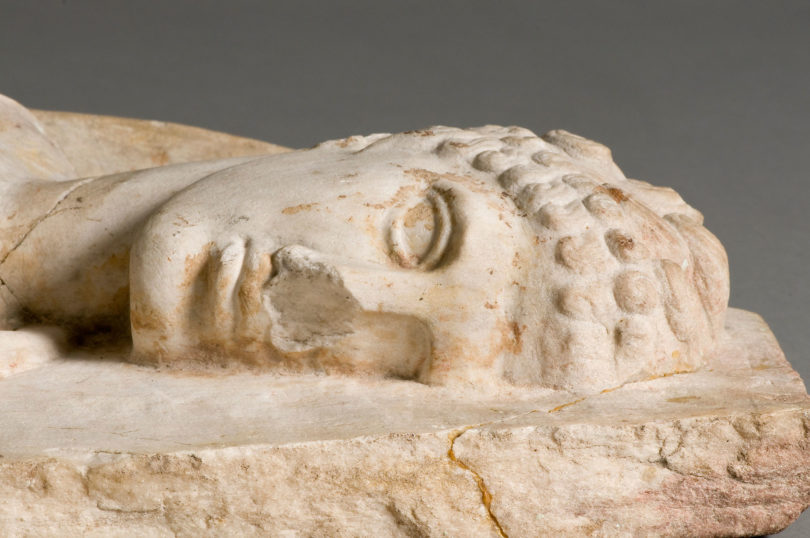Athens, Ga. – The Georgia Museum of Art at the University of Georgia will host a panel discussion on ancient Orpheus Relief sculpture March 28 at 5:30 p.m. in the M. Smith Griffith Auditorium.
The discussion will feature Mark Abbe, an assistant professor of ancient art at UGA; Tina Salguero, an assistant professor of chemistry at UGA; and Jeff Speakman, associate director of UGA’s Center for Applied Isotope Studies.
The Orpheus Relief sculpture, which has been on loan to GMOA from the University of Mississippi Museum since September 2012, depicts Hermes, the Greek messenger god. This relief fragment originally was a part of a three-figure composition of Hermes escorting Eurydice to the Underworld, her final parting from Orpheus. It is this larger composition that is known as the Orpheus Relief and is one of the most celebrated examples of Greek sculpture from the High Classical period, ca. 450-400 B.C.
The ancient Greek and Roman marble sculptures were originally vibrantly painted. And the relief on view at the museum is one of a few Roman replicas of the original Greek work and the only replica known still to contain remnants of its ancient coloration, the focus of study while it has been in Athens.
Speakman has been conducting research on the Orpheus Relief through X-ray fluorescence spectroscopy. Salguero’s work has centered on characterizing the materials found at the nano- and micro-length scales and applying scientific techniques to the pigments that remain on the relief’s surface. Together with Abbe, who has served as director of the project, they will present their findings and provide a greater understanding of the ancient coloration of this work and the meaning associated with it.
Abbe called the study a rare opportunity to examine and study a little-known ancient artwork in an interdisciplinary manner. “Using new tools to study the artwork has allowed us to make new findings that in turn have encouraged us to also ask new probing questions,” he said. “This kind of interdisciplinary study would not have been possible without our unique setting: an art museum intimately connected with a research university.”
The research from this project can be tracked on a blog at http://orpheusrelief.wordpress.com/.
Museum Information
Partial Support for the exhibition and programs at the Georgia Museum of Art is provided by the Georgia Council for the Arts through appropriations of the Georgia General Assembly. The council is a partner agency of the National Endowment for the Arts. Individuals, foundations and corporations provide additional museum support through their gifts to the University of Georgia Foundation. The Georgia Museum of Art is located in the Performing and Visual Arts Complex on the East Campus of the University of Georgia. The address is 90 Carlton St., University of Georgia, Athens, Ga. 3002-6719. For more information, including hours, see http://georgiamuseum.org or call 706/542-GMOA (4662).







